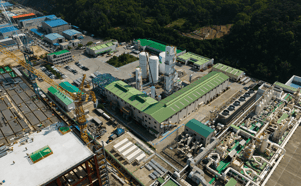Ohmium partners with Tata to boost green hydrogen efforts in India
Electrolyser manufacturer Ohmium International (Ohmium) will work alongside technology firm Tata Projects to advance green hydrogen projects in India.
Although no specific projects have been outlined, Ohmium has stated it will supply PEM electrolysers while Tata Projects will manage the EPC process, including engineering, design, integration and optimisation.
“Ohmium is excited to bring our PEM electrolyser technology together with Tata Projects’ EPC expertise to promote green hydrogen production and global sustainability,” said Arne Ballantine, CEO at Ohmium.
“Together, we share the goal of driving the adoption of green hydrogen in India and accelerating the country’s transition towards a sustainable energy future.”
... to continue reading you must be subscribed
























